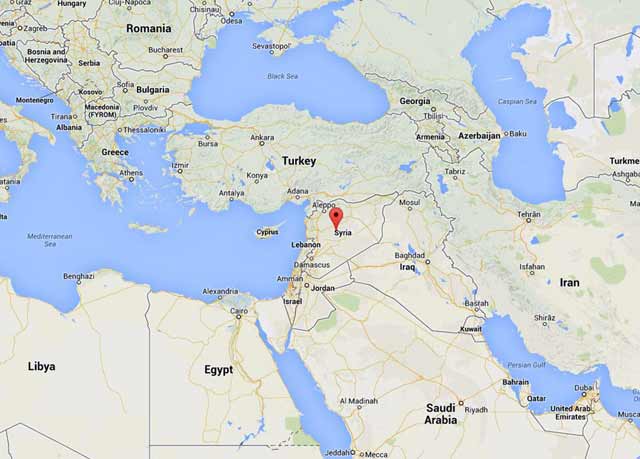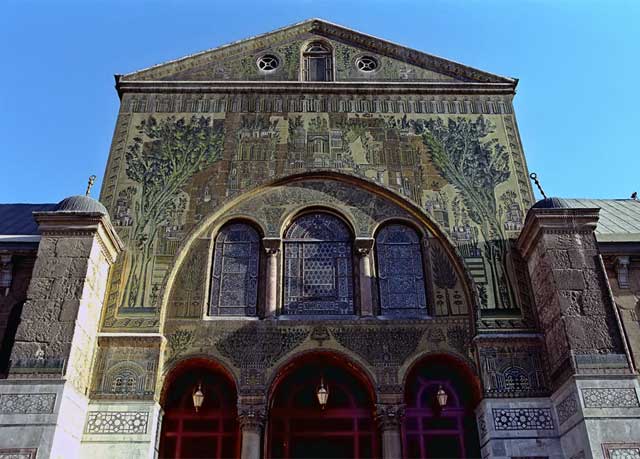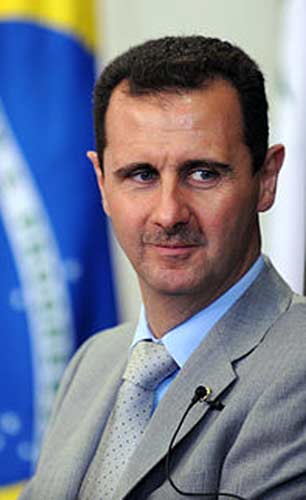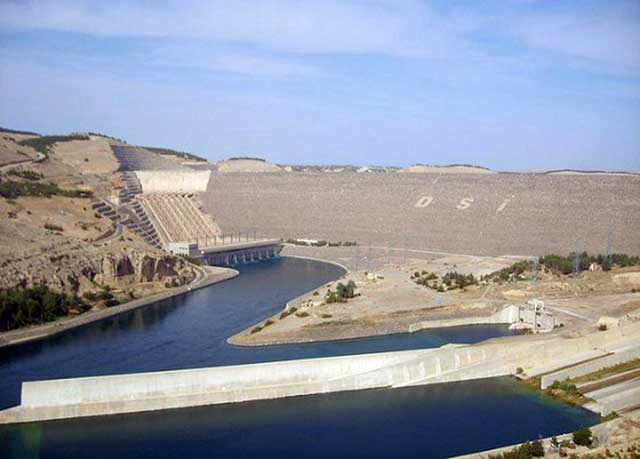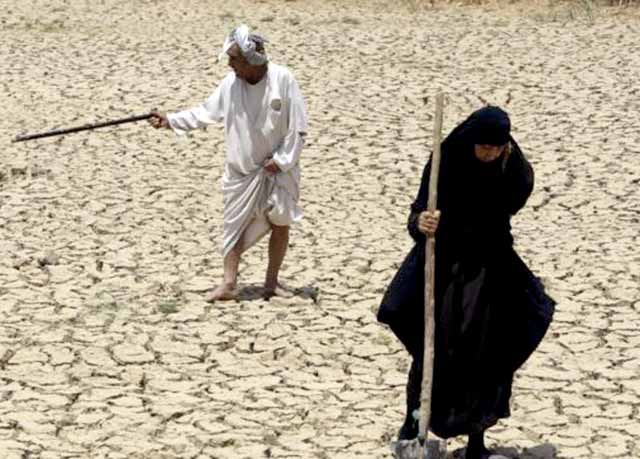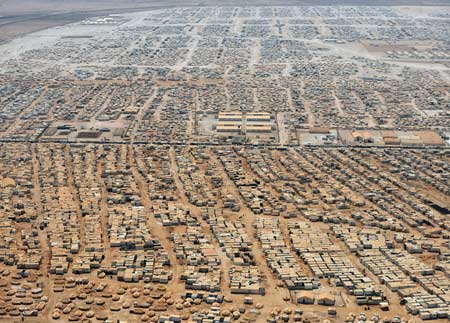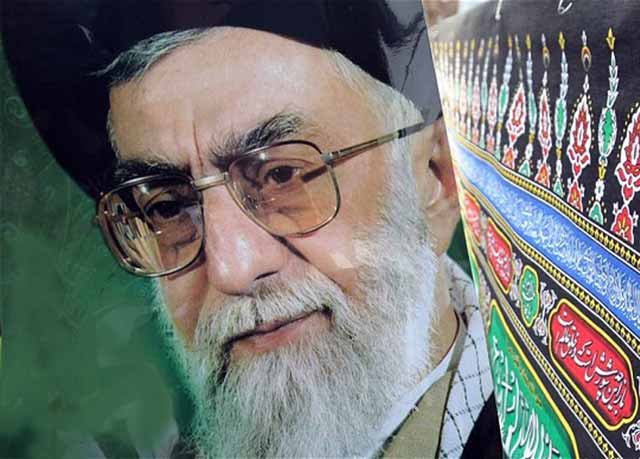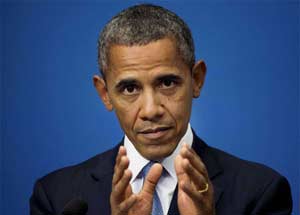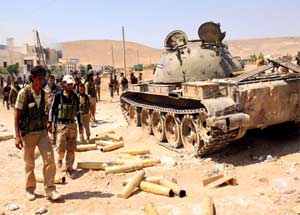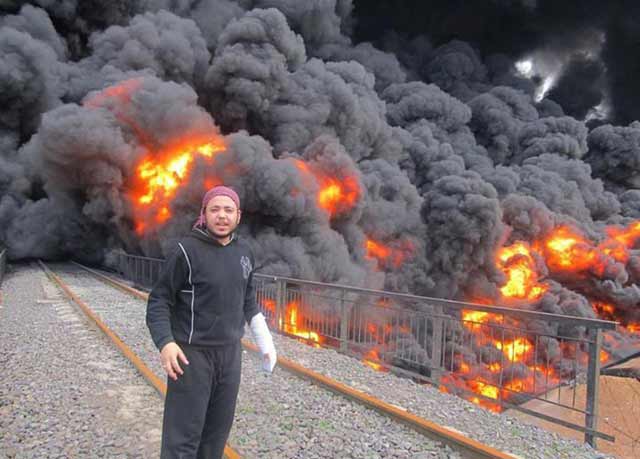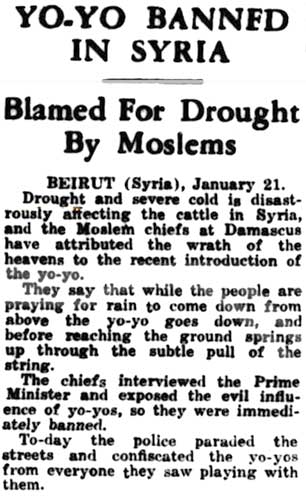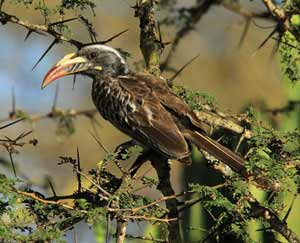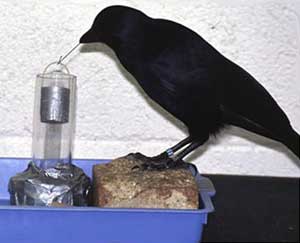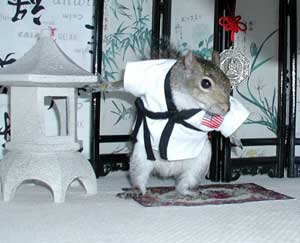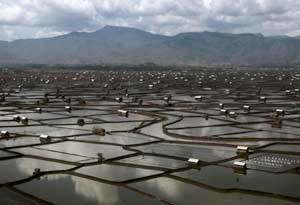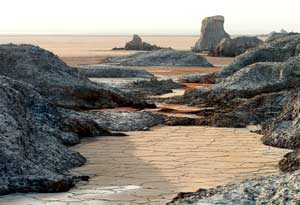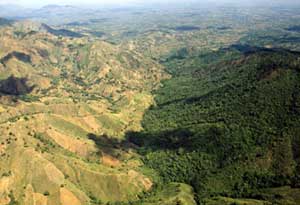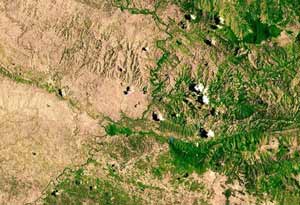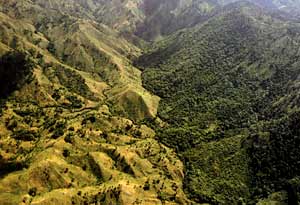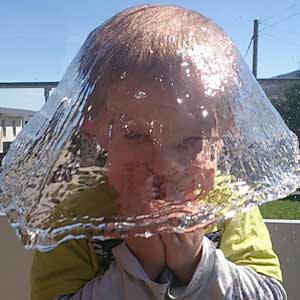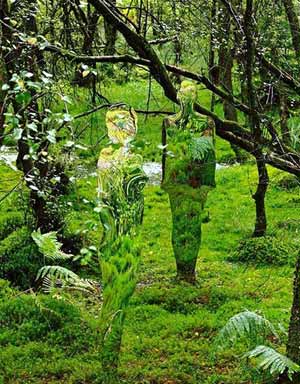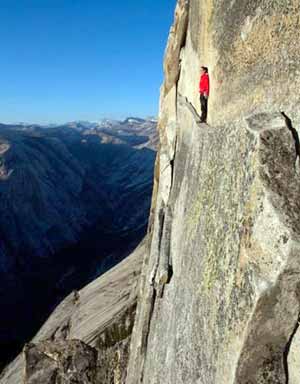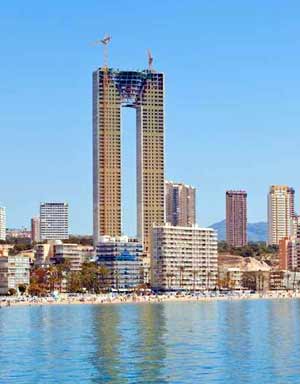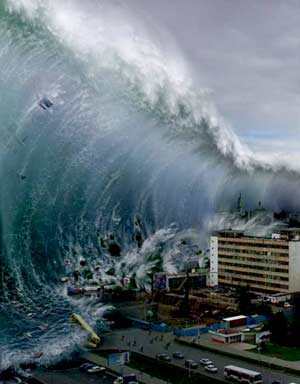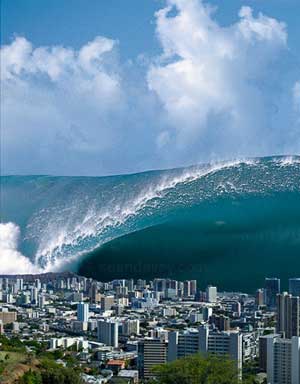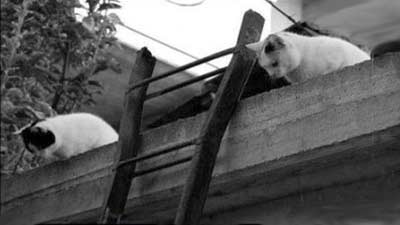Syria, officially the Syrian Arab Republic, is a country in Western Asia, bordering Lebanon and the Mediterranean to the west, Turkey to the north, Iraq to the east, Jordan to the south and Israel to the southwest. Syria’s fertile plains, high mountains, and deserts are home to diverse religious groups, including Arab Alawites (a mystical Shia sect), Sunnis, and Christians. Ethnically, it contains Armenians, Assyrians, Druze, Kurds and Turks.
You can’t make war in the Middle East without Egypt and you can’t make peace in the Middle East without Syria.
—Political Realism and Syria
Sept. 15, 2013
Aside from the clinically insane, everyone wants to do what’s “right” and does the best they can to achieve that end. Even the worst of our present-day villains justify their actions to their own consciences and to their associates. This is broadly true for all people regardless of ethnicity, race, religion, or politics. Fundamentally, everyone wants to believe that they are a good and moral person, acting for the greater good in some way. But are they? Is there some objective way to answer that question?
This is an important concept to keep in mind when attempting to choose sides in a conflict. What is legal and what illegal can be determined in a court of law, but the question of what is moral, ethical, fair, or “right” is more difficult to establish.
In every country, conservatives have more positive feelings toward members of their in-group and higher levels of patriotism toward their country than do more liberal groups. In the US they’re more likely than liberals to have flags in their bedrooms. Conversely, they’re more hostile toward other countries and also to the members of “outsider” groups. They are, in short, more tribal.
Politically, the degree of tribalism is comprised of the strength of 3 major beliefs: “My cultural group is best”, “My religious belief is best”, and “My attitude toward sex is best”. High measures of superior feelings in these areas are commonly found together in people whose political views fall to the right. On the other hand, the attraction to out-groups, secularism, and more sexual tolerance correlates well with political views found on the left.
The more group-oriented, religious, and sexually intolerant people are—the more tribal they are—the more likely they are to reproduce with a mate from their own in-group. Moreover, conservatives are more likely to emphasise group values (including encouraging couples to have many children and expecting males to take a turn at defending the group—generally through a stint in the military) over other possible competing interests (personal pleasure, education, or career choices made at the expense of family).
People who show more interest in interacting with groups who are different generally also show less interest in religion, and have more sexual tolerance. They’re more likely to find sufficient value in groups other than their own—perhaps even to the point of reproducing with them. Thus, liberals place relatively greater importance on individualism and less on in-group values.
To maximise survival, the human race needs ample numbers of both these types. Overall, Muslims seem a pretty conservative group. You might think they’d all get along. But when two groups are forced to interact that differ widely on only one or two things—such as the finer points of religion, or the details of sexual or gender norms—disagreements over diminishing resources are likely to erupt into violence sooner or later. The Middle East (comprised as it is of many distinct groups, some very conservative and some a bit more liberal) is being hammered by a number of environmental stressors. Periodically, this local violence spills over into something more serious; it’s a matter of pressure. A sizable portion of Syria’s current problems require adaptability. Mobility, cooperation, opportunity, ample resources, and water are also important, but none of these are in ample supply.
This brings us to the current Syrian civil war, where group clashes, external influences, environmental stress, opportunity, and corruption have converged into an eruption large enough to be felt globally. There’s a lot at stake.
The war started in March, 2011 and has gone on for about 2½ years (so far). Which side is most defensible? It depends on where you’re standing.
Where Civilisation Began
A Rich History
Syria has artificial borders created by arbitrary European colonial powers, forcing together an amalgam of diverse religious and ethnic groups. Though most Syrians (60%) are Sunni Arabs, the country is run by a minority sect of Alawites who’ve formed a repressive dictatorship that gives their sect special privileges. This makes many Sunnis and other groups hate them, which in turn makes Alawites fear they’ll be wholesale slaughtered if Assad loses his war. (This helps them justify their cruelty.) With so much tension in the area, there may be little anyone can do to end the killing right now. This appears to be a painful but unstoppable re-balancing of power along ethnic and religious lines.
Alawite beliefs are kept secret from outsiders because they’ve been persecuted for these beliefs by various Sunni Muslim rulers in the past. The French Mandate (a League of Nations mandate founded after the First World War and the partitioning of the Ottoman Empire) marked an upturn in Alawite fortunes because it created exclusive areas for minorities, which included an Alawite State. This was later dismantled, but continues to have significant representation in the Syrian army. Since Hafez al-Assad (the current leader’s father) took power in 1970, the government’s been dominated by a political elite led by the Alawite Assad family. Nearly all of Syria’s media outlets are state-owned, and the Ba’ath Party controls nearly all newspapers, schools, colleges, and universities.
Syria is formally a unitary republic. The president is head of state and the prime minister is head of government. The executive branch consists of the president, two vice presidents, the prime minister, and the council of ministers (cabinet). The constitution requires the president to be a Muslim; it gives him the right to appoint ministers, declare war and states of emergency, issue laws (which, except in the case of emergency, require ratification by the People’s Council), declare amnesty, amend the constitution, and appoint civil servants and military personnel. According to the 2012 constitution, the president is elected by Syrian citizens in a direct election.
Syria encompasses the sites of several ancient kingdoms and empires. The capital, Damascus, is among the oldest continuously-inhabited cities in the world. The Euphrates is the most important river, crossing in the east.
Located in the old city of Damascus, this is one of the largest and oldest mosques in the world. It’s considered by some Muslims to be the 4th-holiest place in Islam. After the Arab conquest of Damascus in 634AD, the mosque was built on the site of a Christian basilica dedicated to John the Baptist. The mosque holds a shrine which today may still contain the head of John the Baptist (honoured as a prophet by both Christians and Muslims). It’s believed by some fundamentalists to be the place where Jesus will return at the End of Days. (If you’re into that.)
Complications
The modern Syrian state was established after the First World War, when it gained independence in 1946 as a parliamentary republic. The post-independence period was tumultuous and produced a large number of military coups and attempts.
Natural gas was discovered in 1940, but petroleum in commercial quantities didn’t come until 1956, those fields a natural extension of Iraqi’s Mosul and Kirkuk fields. (Iraq promised to pay Turkey 10% of revenue from the Mosul oil fields in return for Turkish recognition of Iraqi area control. I mention this only to illustrate that sentiments of involved parties in the region are intricate. Alliances are constantly being forged and unforged.) The Kirkuk is huge and thus Syria’s extension could also be huge. Iraq’s field was thought to have 10 billion barrels—1.6 billion cubic metres—of proven oil reserves remaining, though production there has declined to 260,000 barrels a day from 900,000 barrels a day in the early 2000s after years of injecting water and dumping unwanted crude and other oil products in the field’s reservoir, leaving it possibly irreversibly damaged. But Syria’s extension remains unsullied.
During the late 1950s the French dream of a major dam on the Euphrates River became a major priority for the Syrian government and growing relations with the Soviet Union led to a joint operation to build the Tabqa Dam, officially inaugurated July 1973. Lake Assad formed behind the dam, to be used for Syria’s increasing irrigation needs.
Syria entered a brief union with Egypt until 1961, which terminated after a military coup.
By 1974, petroleum was Syria’s leading natural resource and chief export.
A Muslim Brotherhood uprising in Syria began in the late 1970s, reaching a climax in the 1982 Hama massacre, when some 10,000-40,000 people were killed by regular Syrian Army troops.
Syria was under “emergency law” from 1963 to 2011, effectively suspending most constitutional protections for citizens. The Syrian occupation of Lebanon began in 1976. As a result of domestic and international pressure, Lebanese occupation ended in 2006, though many Lebanese had been satisfied with the status quo.
In 2007 under George W Bash, the US began taking part in clandestine operations aimed at Syria, bolstering Sunni extremist groups espousing militant visions of Islam; unfortunately, they were hostile to the US but sympathetic to Al Qaeda—in other words, not entirely trustworthy. The Saudi government, with Washington’s approval, provided funds and logistical aid; this was meant to weaken the government of Syrian President Bashir Assad. Israel believed that putting pressure on Assad would make him more conciliatory—necessary if Syria would finally agree to stop helping Hezbollah get resupplied with arms.
The climate of Syria (like most of the Middle East) is dry and hot, with mild winters. While some parts of the country remain relatively temperate for the region (temperatures stay within a range some might even call “pleasant”), parts of the country see summer temperatures that belong only inside ovens. What role this plays on the politics of the region is, as far as I know, not something that’s been extensively studied—but it must have considerable impact. So does the shortage of water.
“President” Dictator
Mothers all want their sons to grow up to be president, but they don’t want them to become politicians in the process.
— John F Kennedy
Regional Secretary of the Regional Command of the Ba’ath Party in Syria and state president since 2000.
His father, Hafez al-Assad, held office from 1970 to 2000.
Those who knew Bashar Assad in earlier days say he was uncomfortable being the son of a president. He never wanted to lead. A soft-spoken, lisping eye doctor, he enjoyed Western rock music and electronic gadgets—an accidental heir to power. Or so it seems. Yet at 48, he’s proven to be relentlessly resilient, branded by opponents a brutal dictator who kills with chemical weapons. His willingness to do whatever it takes in Syria’s civil war, unleashing his military’s might against entire towns and cities, has (so far) succeeded in keeping his regime in power, even as large swaths of his country fall from his control or turn into devastated killing fields. Nearly 3 years into the uprising against his family’s more than 40-year-rule, he’s defied predictions his end is near.
The West once had the impression Assad was weak or incompetent, says one professor of Middle Eastern culture. “It took this unleashing of violence and bloodshed for people to reassess their view. People are now saying he’s a lot tougher than they thought—perhaps a murderous autocrat who’ll do anything to cling to power (someone strong enough to resist the West his supporters say). The US and allies accuse him of gassing his own people (a claim he denies). For his supporters, he’s a nationalist hero fighting Western imperialism to ensure a stable, secular rule in a turbulent region wracked by sectarian wars. “When a surgeon… cuts and cleans and amputates, and the wound bleeds, do we say to him, `Your hands are stained with blood?’ Assad said. ‘Or do we thank him for saving the patient?’” (Assad justifies his actions to himself.)
When Hafez Assad died in 2000, parliament lowered the presidential age requirement from 40 to 34 (Bashar’s age, of course). Bashar’s elevation was sealed by a nationwide referendum, in which he was the only candidate. (Of course.) Subsequently, Damascus and other cities saw a flourishing of malls, restaurants and consumer goods. Tourism swelled. The world judged Bashar to be a marked improvement.
But all was not roses.
In 2003, Israel bombed a site near Damascus in Syria, claiming it was a terrorist training facility for members of Islamic Jihad. In 2007, Israeli jet fighters carried out Operation Orchard against a suspected nuclear reactor under construction by North Korean technicians. Civil strife was building.
Water Problems
Turkish dams don’t just affect Turks — they cut off access to water in Iraq and Syria as well,
forcing entire populations in those countries to resettle.
If Turkey goes ahead with a series of dams it has both planned and underway, downriver nations (including Syria) could starve. The Southeastern Anatolia Development Project (GAP in Turkish), is one of the most ambitious development projects in the world. It plans to utilise the waters of the Euphrates and the Tigris rivers with the construction of 22 dams and 19 hydroelectric power plants. It also plans to divert the waters of the basin into immense tunnels to the places where 1.7 million hectares of land await irrigation. The GAP was created to develop southeastern Turkey, a region long ignored by the Turkish government who, as the upper riparian, now wishes to utilise the waters of the basin for Turkey’s growing electrical and agricultural needs.
This project creates heavy resentment for Syria and Iraq, threatens the delicate political stability in the Middle East, and further polarises the region: Turkey and Israel’s alliance against Syria, Iran, and Iraq. The basin is one of the world’s most unstable political areas, and water plays a very important role. Currently, Syria and Iraq believe Turkish development projects will reduce the flow of the Euphrates River to Syria and Iraq by 40% and 90% respectively. Syria requires the Euphrates to continue its own irrigation programmes and to keep the water levels high in Assad Lake, now used for hydroelectric production.
In 2009, the United Nations and other international agencies found that more than 800,000 Syrian farmers and herdsmen had been forced off their lands because of drought, most crowding into cities like Dara’a (where the civil war technically started). Additionally, thousands of illegal wells were drilled, drastically lowering ground water supply. Experts estimate 60% of the aquifer has now been lost to illegal drilling. The Tigris-Euphrates basin and the underground reservoirs of fresh water that once nurtured this fragile desert climate may no longer be able to sustain the population in Syria. Dara’a is the capital of an agricultural province, one of the most significant agricultural areas. Their protests spread from Dara’a at Syria’s southern border to communities north of Aleppo and across the vast plain stretching from the Euphrates to Tigris. The pattern of these protests followed the rural path of the drought.
Assad’s economic reforms focused on global trade that benefitted the urban middle classes. This worsened the plight of Syria’s farmers as agricultural subsidies were abolished. Unfortunately, from 1950 until 2010, Syria’s population had quadrupled—partly due to the influx of refugees fleeing conflicts in nearby countries.
Adilla Finchaan, 50, and her husband, Ashore Mohammed, 60, walk their dried-up farmland in Iraq in this 2009 photograph.
The Tigris-Euphrates region has suffered consecutive years of drought.
Moreover, the Syrian conflict that has caught the attention of the world was preceded by the “worst long-term drought and most severe set of crop failures since agricultural civilisations began in the Fertile Crescent.” The drought combined with poor agricultural policy on the part of the Assad regime, had forced mass migrations from the countryside to the cities, which were already under pressures from influxes of (mainly Iraqi) refugees.
Those who make peaceful revolution impossible will make violent revolution inevitable.
— John F Kennedy
The killing started in earnest in April 2011.
Peaceful protests, perhaps inspired by earlier revolutions in Egypt and Tunisia, rose up to challenge the dictatorship running the country. Bashar overreacted by having security forces kill activists. Then Bashar’s men began kidnapping, raping, torturing and killing activists’ family members as well, including children (dumping their mutilated bodies by the sides of roads). Troops began opening fire on protesters; civilians felt they had no choice but to shoot back. Soon, volunteers from other countries joined the Syrian rebels: some wanted to help Syrians, others were jihadists who hate Syria’s secular government. Some just needed an outlet for pent-up fury. Some were paid (but not by the rebels).
In 1982, Assad’s father Hafez had responded to the Muslim Brotherhood-led uprising in the city of Hama by levelling entire neighbourhoods, killing civilians by the thousands, including many who had nothing to do with the uprising. But it worked. Perhaps the younger Assad was trying to reproduce this in response to the 2011 protests. Instead, his actions squandered the goodwill of those who still saw him as an instrument of change. His failure made the country’s descent into chaos much worse.
Army defectors declared the formation of the Free Syrian Army and began forming fighting units. This opposition is dominated by Sunni Muslims, whereas the leading government figures are Alawites (Shia). Now, what began as a civil uprising against repression, poverty, and government corruption has turned into a regional proxy war engulfing the entire Middle East. Nonviolent citizens are withering under the weight of civil war. According to the United Nations, up to 100,000 people have been killed. To escape this violence, over 1.7 million Syrian refugees have fled to neighbouring countries Jordan, Iraq, Lebanon, and Turkey. As civil war drags on, there are worries the country may fragment and cease to function as a state. An alternative government formed in 2012 by opposition group Syrian National Coalition has been recognised as the “sole representative of the Syrian people” by several nations including the US, UK, and France.
Anti-Government armed groups also commit war crimes, including murder, sentencing and execution without due process, torture, hostage-taking and pillage. They endanger civilians by positioning military objectives in civilian areas. Their violations and abuses aren’t believed by outsiders to have quite reached the intensity and scale of those committed by government forces and affiliated militia—however, the desperation of the parties to the conflict results in increasing levels of cruelty and brutality, bolstered by the availability of weapons. Escalation is likely.
- A refugee camp is seen 3 September in Syrian territory near the Turkish border town of Cilvegozu.
- Aerial view of the Zaatari refugee camp, near the Jordanian city of Mafraq, July 2013. US Secretary of State John Kerry spent 40 minutes with 6 refugees who vented their frustrations at the international community’s failure to end Syria’s civil war. The camp holds roughly 115,000 Syrian refugees in Jordan, 12 kilometres (8 miles) from the Syrian border.
Who Are the Villains Here?
The situation for human rights in Syria has long been a significant concern among organisations such as Human Rights Watch, who refers to the country’s record as “among the worst in the world.” Authorities are accused of arresting democracy and human rights activists, censoring websites (the Syrian Electronic Army serves as a pro-government military faction in cyberspace; it’s long been considered an enemy of the hacktivist group Anonymous), detaining bloggers, and imposing travel bans. Arbitrary detention, torture, and disappearances are widespread. Although Syria’s constitution guarantees gender equality, personal statute laws and the penal code discriminate against women and girls. Moreover, leniency is granted for “honour killings”.
Once the government was accused of using chemical weapons against its civilians, diplomatic relations were severed with many countries including: Britain, Canada, France, Italy, Germany, Tunisia, Egypt, Libya, the US, Belgium, Spain, and the Gulf States. Syria continues to maintain diplomatic relations with Yemen, Lebanon, Sudan, Iraq, Iran, China, Venezuela and Russia (who all support the Syrian government in its conflict with Syrian opposition groups—at least so far).
Iran’s supreme leader, accuses the US of using chemical weapons as a pretext to launch an attack.
His sentiments were echoed by the commander of the Revolutionary Guards’ elite Qods force.
The US and Israel claim firm evidence that the latest attack was indeed a deployment of chemical weapons by Assad’s regime, justifying a military intervention of some sort. (Other countries are “pretty sure” it was the Syrian army who used them.) Main evidence cited by the US are intercepted phone calls, the bulk of which were provided by Israel. Reported Foreign Policy, “An official at the Syrian Ministry of Defence exchanged panicked phone calls with a leader of a chemical weapons unit, demanding answers for a nerve agent strike that killed more than 1,000 people.” This is hardly proof of Assad’s culpability as it implies Syrian defence officials didn’t seem to have issued specific orders for a strike and were attempting to investigate whether their own chemical weapons unit was indeed responsible.
On the attack itself, experts are unanimous that the shocking footage of civilians—including children—suffering the effects of a chemical attack, is real, but remain divided whether it involves military-grade chemical weapons associated with Assad’s arsenal, or a more amateur concoction potentially linked to rebels. Independent chemical weapons experts point to inconsistencies in the video footage and symptoms displayed by victims, raising questions about the nature of the agents used, saying trauma to the nervous system was clear but it’s too early to draw a conclusion just from the videos. A former officer of the US Army’s Chemical Corps said: “None of the people treating the casualties or photographing them are wearing any sort of chemical-warfare protective gear; despite that, none seem harmed. (This statement was later disputed.) There are none of the other signs you would expect to see in the aftermath of a chemical attack, such as intermediate levels of casualties, severe visual problems, vomiting and loss of bowel control.”
It’s difficult to pin down a specific chemical from symptoms seen in footage; it could be a chemical weapon or perhaps a riot control agent used in a confined space. Or even pesticides. Who fired it and what it was has yet to be determined. Weapons could have come in from outside loaded with what was thought to be normal loads but instead contained chemicals. Storehouses containing hazards could have been bombed.
The evidence available in the public record on past deployment of chemical agents implicates both Assad and the rebels—not the Free Syrian Army (FSA) as a whole, but rather militant jihadist factions linked to al-Qaeda and funded by Saudi Arabia. In March a major attack on the predominantly Shi’a town of Khan al-Assal killed 26 people including civilians and Syrian soldiers. It was apparently committed by rebels “with al-Qaeda sympathies” using a caustic agent, perhaps chlorine. Last year, Syrian jihadist groups led by the al-Qaeda affiliated al-Nusrah Front captured several Syrian military bases as well as a chlorine factory near Aleppo.
- A UN chemical weapons expert, wearing a gas mask, holds a plastic bag containing samples from one of the sites of an alleged chemical weapons attack in the Ain Tarma neighbourhood of Damascus 29 August 2013.
- The US government insists it has the intelligence to prove a case against Assad but the public has yet to see anything concrete—no satellite imagery, no transcripts of Syrian military communications—connecting the government of President Assad to chemical weapons attacks. Assad appears to have no firm proof that someone else did it, either.
- Free Syrian Army fighters inspect munitions and a tank that belonged to forces loyal to Syria’s President Bashar al-Assad after they seized Aleppo’s town of Khanasir.
Yet eyewitness reports from victims and doctors alleged other instances of chemical weapons attacks attributed by locals to Syrian government forces. Conversely, Carla del Ponte, independent UN war crimes investigator on Syria, says evidence derived from interviews with victims, doctors and field hospitals confirms that rebels used the nerve agent sarin in an attack 3 months ago. The latest UN report released June 2013 confirms several allegations of chemical weapons attacks but concludes it “... has not been possible, on the evidence available, to determine the precise chemical agents used, their delivery systems or the perpetrator.”
Further complicating the matter, a veteran Middle East correspondent for Associated Press cites interviews with “doctors, Ghouta residents, rebel fighters and their families” who believe that “certain rebels received chemical weapons via the Saudi intelligence chief, Prince Bandar bin Sultan, and were responsible for carrying out the gas attack.” The arms were reportedly given by al-Nusrah fighters to ordinary rebels without informing them of their nature. Or is this disinformation planted by Assad agents in Damascus? Further clarity is needed.
Leaked emails from the private intelligence firm Stratfor include notes from a meeting with Pentagon officials confirming US-UK covert operations in Syria since 2011 in which it was said that collapsing Assad’s regime was a final goal, though military intervention would only be politically feasible (read domestically palatable for Western populations) in the context of “a massacre” so grievous it would lead to a public outcry. Sarin gas, in this view, isn’t a horrifically destructive weapon that causes mass terror and death, it’s a rhetorical device to argue for military intervention. Syria isn’t a complex and terrible civil war, it’s a test case for US foreign policy. For proponents of strikes, a paramount concern is that inaction could hurt US credibility. For opponents, it’s that any action could suck the US in. Actual Syrians, over 100,000 of whom have died and 2 million made refugees, are supporting players in a drama that’s all about the US.
Since the civil war began, the Syrian economy has shrunk by more than ⅓ and its currency has fallen to ⅙ of its former value. The government increasingly relies on credit from Iran, Russia and China. A third of its people live in poverty. Prior to the civil war in 2011, the government hoped to attract new investment in the tourism, natural gas, and service sectors to diversify its economy and reduce its dependence on oil and agriculture (perhaps explaining Assad’s cavalier attitude to beleaguered farmers). The government began to institute economic reforms aimed at liberalising most markets, but those reforms were slow and ad hoc and have been completely reversed since the outbreak of 2011 conflict. Revenues from tourism have dropped dramatically, with hotel occupancy rates falling from 90% before the war to less than 15% in May 2012.
In Conclusion
An anti-Syrian regime activist stands in front of flames and black smoke from a bombed oil pipeline in Homs, Syria, February 2012.
In 2009—the same year former French foreign minister Dumas alleges the British had begun planning operations in Syria—Assad refused to sign a proposed agreement with Qatar that would run a pipeline from the latter’s North field, contiguous with Iran’s South Pars field, through Saudi Arabia, Jordan, Syria and on to Turkey, with a view to supplying European markets—crucially bypassing Russia. Assad’s rationale was “to protect the interests of [his] Russian ally, which is Europe’s top supplier of natural gas.”
Instead, the following year, Assad pursued negotiations for an alternative $10 billion pipeline plan with Iran, across Iraq to Syria. It would also potentially allow Iran to supply gas to Europe from its South Pars field shared with Qatar. The Memorandum of Understanding (MoU) for the project was signed by July 2012—just as Syria’s civil war was spreading to Damascus and Aleppo—and earlier this year Iraq signed a framework agreement for construction of the gas pipelines. This will potentially allow Iran to supply gas to European markets.
The Iran-Iraq-Syria pipeline plan was a “direct slap in the face” to Qatar’s plans. No wonder Saudi Prince Bandar bin Sultan, in a failed attempt to bribe Russia to switch sides, told President Vladmir Putin that “whatever regime comes after” Assad, it will be “completely” in Saudi Arabia’s hands and will “not sign any agreement allowing any Gulf country to transport its gas across Syria to Europe and compete with Russian gas exports”, according to diplomatic sources. But Putin still refused. The Prince vowed military action.
Israel also has a direct interest in countering the Iran-brokered pipeline. In 2003, just a month after the commencement of the Iraq War, US and Israeli government sources spoke of plans to “build a pipeline to siphon oil from newly conquered Iraq to Israel” bypassing Syria. The basis for the plan, known as the Haifa project, goes back to a 1975 MoU signed by then Secretary of State Henry Kissinger, “whereby the US would guarantee Israel’s oil reserves and energy supply in times of crisis.” As late as 2007, US and Israeli government officials were in discussion on costs and contingencies for the Iraq-Israel pipeline project.
Because It’s All Absurd…
All the parties intervening in Syria’s escalating conflict—the US, Saudi Arabia, Qatar, Turkey, and Israel on one side providing limited support to opposition forces, with Russia, China and Iran on the other shoring up Assad’s regime—are doing so for their own narrow, competing geopolitical interests.
Realpolitik refers to politics or diplomacy based primarily on power and on practical and material factors and considerations, rather than explicit ideological notions or moral or ethical premises. It shares aspects of its philosophical approach with those of realism and pragmatism. The term is sometimes used pejoratively to imply politics that are coercive, amoral, or Machiavellian (with some reason).
Everyone is trying to do what’s “right” for their tribe or for their party or for their families—or maybe just for themselves. The result is that no one sees the big picture. And why not? I would conclude it’s because most, if not all, politicians operate under realpolitik—they’re just being practical, they tell themselves. Meanwhile, they tell their constituents that they’re political ideologues who favour principle and ethics over other considerations.
Believe what you must to get by. Complain about the rest. But don’t expect to change anything.
Sources:
http://en.wikipedia.org/wiki/Abd_al-Muhsin_as-Sa’dun Abd al-Muhsin as-Sa’dun was an Iraqi politician who served as prime minister of Iraq 4 separate times between 1922 and 1929. He is alleged to have committed suicide.
http://en.wikipedia.org/wiki/Alawites Alawites are a prominent mystical religious group centred in Syria who follow a branch of the Twelver school of Shia Islam. The name “Alawi” means followers of Ali. The sect is believed to be founded by Ibn Nusayr, in the 8th century and represents 12% of the Syrian population (and a significant minority in Turkey and northern Lebanon).
http://en.wikipedia.org/wiki/Arab_Socialist_Ba’ath_Party_—_Syria_Region Arab Socialist Ba’ath Party in the Syria Region has ruled Syria continuously since the 1963 Syrian coup d'état which brought the Ba’athists to power. The Ba’ath party functions as Syria’s dominant party, but is becoming less and less in control.
http://en.wikipedia.org/wiki/Arab_Spring Arab Spring is a term for the revolutionary wave of demonstrations and protests (both non-violent and violent), riots, and civil wars in the Arab world that began in December 2010. To date, rulers have been forced from power in Tunisia, Egypt (twice), Libya, and Yemen; civil uprisings have erupted in Bahrain and Syria; major protests have broken out in Algeria, Iraq, Jordan, Kuwait, Morocco, and Sudan; and minor protests have occurred in Mauritania, Oman, Saudi Arabia, Djibouti, Western Sahara, the Palestinian Authority and Kosovo.
http://www.huffingtonpost.com/2013/09/09/bashar-assad-syria_n_3895890.html?ncid=webmail1 “ Bashar Assad: Syria’s Accidental Heir Proves Resilient” by Zeina Karam, 9 September 2013.
http://www.voanews.com/content/drought-called-factor-in-syria-uprising/1733068.html “ Drought Called a Factor in Syria’s Uprising” by David Arnold, 20 August 2013.
http://en.wikipedia.org/wiki/French_Mandate_for_Syria_and_the_Lebanon French Mandate: During the two years that followed the end of the war in 1918, the British held control of most Ottoman Mesopotamia (modern Iraq) and the southern part of the Ottoman Syria (Palestine and Jordan), while the French controlled the rest of Ottoman Syria (modern Syria, Lebanon, Alexandretta) and other portions of southeastern Turkey. In early 1920s, the British and French control of these territories became formalised by the League of Nations’ mandate system, and France was assigned the mandate of Syria in 1923, which included the territory of present day Lebanon and Alexandretta (Hatay) as well.
http://www.thenational.ae/business/energy/qatar-seeks-gas-pipeline-to-turkey#full “Qatar seeks gas pipeline to Turkey” by Tamsin Carlisle, 26 August 2009. Qatar’s massive gas reserves, at about 900 trillion cubic feet, are the world’s 3rd-largest. (See also http://oilprice.com/Geopolitics/Middle-East/IRAN-IRAQ-Pipeline-to-Syria-Ups-Ante-in-Proxy-War-with-Qatar.html “Iran-Iraq: Pipeline to Syria Ups Ante in Proxy War with Qatar” by Editorial Department, 22 February 2013.)
https://wikileaks.org/gifiles/docs/1671459_insight-military-intervention-in-syria-post-withdrawal.html “The Global Intelligence Files ” by Wikileaks, released 6 March 2012. Texas headquartered “global intelligence” company Stratfor reveal the inner workings of a company that fronts as an intelligence publisher, but provides confidential intelligence services to large corporations, such as Bhopal’s Dow Chemical Company, Lockheed Martin, Northrop Grumman, Raytheon and government agencies, including the US Department of Homeland Security, the US Marines and the US Defence Intelligence Agency.
http://dailycaller.com/2013/09/09/did-global-warming-cause-the-syrian-civil-war/ “Did global warming cause the Syrian civil war?” by Michael Bastasch 9 September 2013.
http://www.ohchr.org/Documents/HRBodies/HRCouncil/CoISyria/A-HRC-23-58_en.pdf “Report of the Independent International Commission of Inquiry on the Syrian Arab Republic ” 4 June 2013.
http://www.alarabiya.net/articles/2013/02/20/267257.html “ Iraq green lights gas pipeline deal with Iran, Syria” by AFP, 20 February 2013.
http://www.theguardian.com/world/2003/apr/20/israelandthepalestinians.oil “ Israel seeks pipeline for Iraqi oil” by Ed Vuillamy, The Observer, 20 April 2003. (See also “http://www.haaretz.com/print-edition/news/u-s-checking-possibility-of-pumping-oil-from-northern-iraq-to-haifa-via-jordan-1.98134”;http://www.haaretz.com/print-edition/news/u-s-checking-possibility-of-pumping-oil-from-northern-iraq-to-haifa-via-jordan-1.98134 “US checking possibility of pumping oil from northern Iraq to Haifa, via Jordan” by Amiram Cohen, 25 August 2003.)
http://www.washingtonpost.com/blogs/worldviews/wp/2013/09/04/this-jon-stewart-episode-is-everything-wrong-with-how-we-talk-about-syria/ One recent Jon Stewart episode covers “Everything wrong with how we talk about Syria” by Max Fisher, 4 September 2013.
http://en.wikipedia.org/wiki/Kirkuk_Field Kirkuk Field was discovered by the Turkish Petroleum Company in 1927. The oilfield was brought into production by the Iraq Petroleum Company (IPC). Some analysts believe that poor reservoir-management practices during the Saddam Hussein years seriously and permanently damaged Kirkuk’s oil field. One example shows an estimated 1.5 billion barrels (240 million cubic metres) of excess fuel oil being reinjected, which increases oil viscosity making it more difficult (and thus more expensive) to extract.
http://www.washingtonpost.com/blogs/worldviews/wp/2013/08/29/9-questions-about-syria-you-were-too-embarrassed-to-ask/ “ 9 questions about Syria you were too embarrassed to ask” by Max Fisher, 2 August 2013.
http://www.aljazeera.com/indepth/opinion/2012/08/201285133440424621.html “Syria’s Pipelineistan War ” 6 August 2012. Deep beneath the “Damascus volcano” and “the battle of Aleppo” the tectonic plates of the global energy chessboard keep on rumbling.
http://en.wikipedia.org/wiki/Realpolitik Realpolitik is—well—realistic as opposed to that idealistic (completely unrealistic) stuff. It means dealing with other powerful nations in a practical manner rather than on the basis of political doctrine or ethics. It’s limited only by practical exigencies. It often entails compromising on ideological principles, whereas political ideologues favour principle over other considerations.
http://www.newyorker.com/reporting/2007/03/05/070305fa_fact_hersh?currentPage=all “The Redirection: Is the Administration’s new policy benefitting our enemies in the war on terrorism?” by Seymour M Hersh, 5 March 2007.
http://www.google.com/hostednews/afp/article/ALeqM5jhPTvibpnk98IR09Amuc5QzWQsIQ?docId=CNG.c0b07c0fd43690568ae07ab83f87f608.6d1 “Moscow rejects Saudi offer to drop Assad for arms deal” by Sammy Katz (AFP), 8 August 2013.
http://www.nafeezahmed.com/2013/08/special-report-syria-intervention-plans.html “ Special Report: Syria intervention plans fuelled by oil interests, not chemical weapon concerns” by Nafeez Ahmed, 30 August 2013.
http://blogs.channel4.com/alex-thomsons-view/syria-spooks-wikileaks-military/5502 “ Spooks’ view on Syria: what Wikileaks revealed” by Alex Thomson, 28 August 2013.
http://www.telegraph.co.uk/news/worldnews/middleeast/syria/10289844/Syria-US-is-using-chemical-weapons-as-pretext-for-attack-says-Iran.html “ Syria: US is using chemical weapons as “pretext” for attack, says Iran” by Robert Tait, Middle East Correspondent, 5 September 2013.
http://en.wikipedia.org/wiki/Syria Syria (under President Bashar al-Assad) wishes to ensure national security, increase influence among its Arab neighbours, and secure the return of the Golan Heights. At many points in its history, Syria has seen virulent tension with its geographically cultural neighbours, specifically Turkey, Israel, Iraq, and Lebanon. Syria enjoyed an improvement in relations in the 21st century, prior to the Arab Spring and the Syrian civil war.
http://www1.american.edu/TED/ice/tigris.htm “Tigris-Euphrates River Dispute”. (More can be found at http://www.greenprophet.com/2011/06/turkeys-dams-are-violating-human-rights-un-report-says/ “ Turkey’s Dams Are Violating Human Rights, UN Report Says” by Julia Harte, 4 June 2011.)
http://en.wikipedia.org/wiki/Umayyad_Mosque The Umayyad Mosque is also known as the Great Mosque of Damascus. It’s still in use after almost 1,400 years.
http://www.alternet.org/books/why-racist-people-tend-be-conservative “ Why Racist People Tend to Be Conservative, ” a book review of the book Our Political Nature: The Evolutionary Origins of What Divides Us,“ by Avi Tuschman. Discusses the evolutionary nature of liberals and conservatives.
Smarter than You Think
- The hornbill is bi-lingual: he is able to understand the warnings of the chatty Diana monkey. The monkey gives distinct warning calls to other monkeys based on predators it sees—the warning for a leopard is different from the warning for a crowned eagle, for example. Hornbills scatter upon hearing the warning for the eagle, but not for the leopard, because the leopard isn’t much of a threat to an animal that can fly.
- The 6-month-old dog, Torque, adopted tiny baby owl Shrek when she was taken from her mother for her own protection after just 3 days. Adoptive dad Torque is now guarding the rare bird at the home of head falconer John Picton. Tamed Shrek will be used as a display owl at fetes and open days and John believes her interaction with dogs and humans from an early age is ideal training. (Does this dog have no ears?)
- The corvid family includes crows, ravens, jays, and magpies. Corvids are considered the most intelligent bird species, and their tool-making abilities rival or surpass those of great apes—in fact, their puzzle-solving skills are about on par with a 5-year-old human child. The New Caledonian crow is the only non-human species to invent new tools by modifying existing tools. It then passes those new creations onto other crows in its social group. It uses tools to retrieve other tools and can create tools out of materials it’s never seen in the wild. In an experiment at the University of Oxford, two crows were presented with two types of wire, one hooked and one straight. The hooked wire was needed to retrieve a tiny pail containing food from a tube. But when one of the crows grabbed the hooked wire and “made off,” the second crow bent the straight wire into a hook and snagged the food. These crows had never seen wire before.
- Rats are able to count. In one experiment, rats had to learn that food is in the 4th of a line of boxes. After learning this, no matter how many boxes were placed, no matter the size or colour or shape of the boxes, the rats were able to pick out the 4th one and retrieve the food. Another study tested their numerical abilities as timers: most animals can’t measure time intervals, but rats, when conditioned to press a button to retrieve food every 15 seconds, can accurately keep time in their heads. Rats also demonstrate altruistic behaviour, a key element of social intelligence. In this study, rats freed other rats from cages, even when there was no obvious reward.
- Sugar Bush Squirrel is a live eastern grey squirrel owned by Kelly Foxton. Rescued, as a baby from a tree being cut down, Sugar now lives with Kelly in Boca Raton, Florida. A small, lime-green parrot named Rio is her constant companion. Sugar has over 3,000 outfits, each with matching hats and accessories.
- In the early 1940s, LIFE magazine reported that a Mrs Mark Bullis of Washington, DC, had adopted a squirrel “before his eyes were open, when his mother died and left him in a tree” in the Bullis’s back yard. The quiet, rodential adventures and sartorial splendor of Tommy Tucker, the orphaned squirrel, became celebrated in 1940s America. “Mrs. Bullis’ main interest in Tommy,” LIFE continued, “is in dressing him up in 30 specially-made costumes. Tommy has a coat and hat for going to market, a silk pleated dress for company, and a Red Cross uniform for visiting the hospital. Tommy never seems to complain, although sometimes he bites Mrs. Bullis. Mrs Bullis never complains about being bitten.”
Back to the Salt Mines
The process of mining that salt can produce beautiful landscapes, including deep, stable caverns, multicoloured pools of water, and geometric carvings. Some of these locations even become tourist destinations, serving as concert halls, museums, and health spas touting the benefits of halotherapy.
- A small boat quay on a lake at the bottom of 800-year-old Turda salt mine on 9 December 2010.
- An aerial view of the salt fields of Palibelo village, on the outskirts of Bima, on Indonesia’s Sumbawa island, on 22 November 2012.
- Near the Dallol volcano, on 29 November 2004. Dallol is unique in the world because is the only volcano situated below the sea level in Danakil depression, also known as Afar, one of the hottest places in the world with temperatures sometimes over 60°C in the sun.
Those Kids Are Grounded
- A wide-eyed baby squirrel checking out his surroundings after being let out of the safety of the burrow for the first time in Florence, Arizona.
- These meerkittens were born in February at Bristol Zoo Gardens.
- Just another day on the job.
- Three meerkats have been born at Marwell Wildlife Park in Hampshire, UK since last summer when the the park built a new home for them. These little ones are incredibly cute.
- I don’t know where this was taken.
- They look like a family lining up for a group photo. Taken at Rio Vista Park in San Marcos, Texas.
Where Does Haiti Stop and the Dominican Republic Start?
The island of Hispaniola has rains that come mainly from the east. Hence the Dominican (eastern) part of the island receives more rain and supports higher rates of plant growth. Hispaniola’s highest mountains (more than 10,000 feet) are on the Dominican side and rivers from those mountains flow mainly eastward. This side has broad valleys, plains, and plateaus—and much thicker soil. In particular, the Cibao valley in the north is one of the richest agricultural areas in the world. In contrast, the Haitian side is drier because of that barrier of high mountains blocking rains from the east. Compared to the Dominican Republic, the area of flat land good for intensive agriculture is much smaller. There’s more limestone terrain and soils are thinner and less fertile, with a lower capacity for recovery.
Haiti, or rather the large island in the western Atlantic of which the present-day Republic of Haiti occupies the western part, was discovered by Christopher Columbus in December 1492. The native Taino people knew it as Ayiti, but Columbus claimed it for the Spanish crown and named it La Isla Española. As Spanish interest in the island faltered with the discovery of gold and silver elsewhere in Latin America, the early occupiers moved east, leaving the western part of Hispaniola free for English, Dutch and particularly French buccaneers. The French West India Company gradually assumed control of the colony, and by 1665 France had formally claimed it as Saint-Domingue. A treaty with Spain 30 years later saw Madrid cede the western ⅓ of the island to Paris.
Economically, French occupation was a runaway success. But Haiti’s riches could only be exploited by importing up to 40,000 slaves a year. For nearly a decade in the late 18th century, Haiti accounted for more than ⅓ of the entire Atlantic slave trade. Conditions for these men and women were atrocious; the average life expectancy for a slave on Haiti was 21 years. Abuse was dreadful, and routine: “Have they not hung up men with heads downward, drowned them in sacks, crucified them on planks, buried them alive, crushed them in mortars?” wrote one former slave some time later. “Have they not forced them to eat excrement? Have they not thrown them into boiling cauldrons of cane syrup? Have they not put men and women inside barrels studded with spikes and rolled them down mountainsides into the abyss?” The rebellion of Saint-Domingue’s slaves began on the northern plains in August 1791, but the uprising, ensuing bloody civil war and finally bitter and spectacularly brutal battle against Napoleon Bonaparte’s forces was not over for another 12 years. As France became increasingly distracted by war with Britain, the French commander, the Vicomte de Rochambeau, was finally defeated in November 1803 (though not before he had hanged, drowned or burned and buried alive thousands of rebels). Haiti declared independence on 1 January 1804. The country’s infrastructure and most of its plantations were ruined. It wasn’t the best of starts. And then things went downhill from there… Today, Haiti is one of the most damaged societies on earth.
Pot Pourri
Making Choices
- Birthrates are at an all time low and couples choosing to forgo having babies are contributing to that. Reasons are varied; some women allude to demanding work schedules that make having a child undesirable, others to the fact that they simply have no desire to. A common thread among all voluntarily childless women’s stories is that they feel they must continually justify their choice. People rarely ask, 'Why do you have kids?’ Instead it’s 'Why don’t you?’ And that 'why don’t you’ comes with a ton of judgement… Former Arkansas Governor Mike Huckabee, a religious conservative, questions whether it is actually possible for people who don’t have children to lead a fulfilling life. (Imagine the horror if childless women started to believe that their lives were still worthwhile.) As far as Huckabee is concerned, reproducing is “the highest particular calling that I think we can have as human beings” and anyone who rejects that calling must be in some way lacking. Hosts Tucker Carlson, was even more direct in his criticism of the childfree: “Having children means less time for vacations and spin class, where the real meaning in life resides, right? I mean, have you ever seen anything more selfish, decadent and stupid?” He doesn’t mentions the selflessness of women who choose not to have a baby, not because they wouldn’t love one, but because they don’t feel they’re in a position to provide that baby with the kind of life it deserves.
- Sir Adrian Paul Ghislain Carton de Wiart was a British Army officer of Belgian and Irish descent. He served in the Boer War, First World War, and Second World War; was shot in the face, head, stomach, ankle, leg, hip, and ear; survived two plane crashes; tunnelled out of a POW camp; and pulled off his own fingers when a doctor refused to amputate them. Describing his experiences in World War I, he wrote, “Frankly I had enjoyed the war.” After returning home from service in the Second World War, he was sent to China as Winston Churchill’s personal representative. In his memoirs he wrote, “Governments may think and say as they like, but force cannot be eliminated, and it is the only real and unanswerable power. We are told that the pen is mightier than the sword, but I know which of these weapons I would choose.” Carton de Wiart died in 1963.
- The Intempo skyscraper in Benidorm, Spain—standing proud in this image—was designed to be a striking symbol of hope and prosperity, to signal to the rest of the world that the city was escaping the financial crisis. But Gizmodo reported (incorrectly, as it turned out) that the builders had neglected to include elevators. (“The original design obviously included specifications for an elevator big enough for a 20-storey building. In the process of scaling things up, however, nobody thought to redesign the elevator system—and, naturally, a 47-storey building requires more space for its lifts and motor equipment. Sadly, that space doesn’t exist. Perhaps unsurprisingly, the architects working on the project have resigned, and it remains unclear exactly how the developers will solve the problem.”) The hoax seems to come from a bad translation by Gizmodo of a somewhat confusing article in the Spanish daily El País.
 Animals
Animals Animation
Animation Art of Playing Cards
Art of Playing Cards Drugs
Drugs Education
Education Environment
Environment Flying
Flying History
History Humour
Humour Immigration
Immigration Info/Tech
Info/Tech Intellectual/Entertaining
Intellectual/Entertaining Lifestyles
Lifestyles Men
Men Money/Politics/Law
Money/Politics/Law New Jersey
New Jersey Odds and Oddities
Odds and Oddities Older & Under
Older & Under Photography
Photography Prisons
Prisons Relationships
Relationships Science
Science Social/Cultural
Social/Cultural Terrorism
Terrorism Wellington
Wellington Working
Working Zero Return Investment
Zero Return Investment